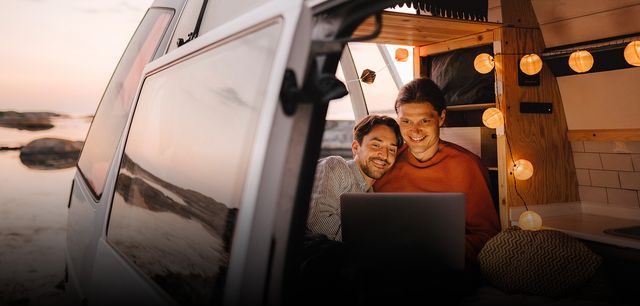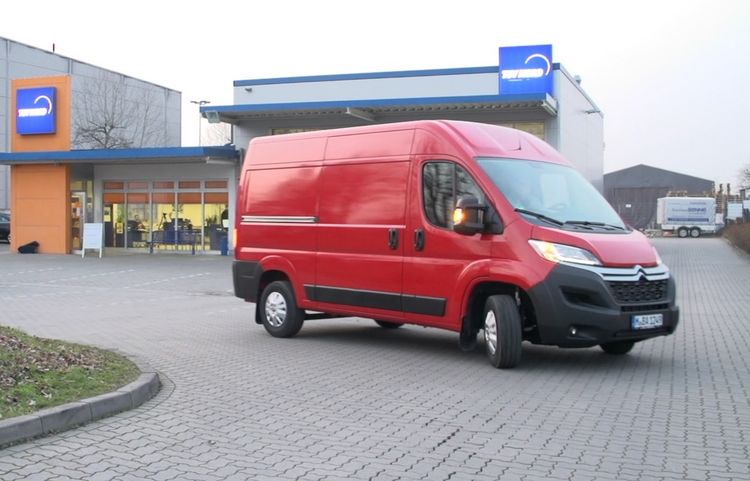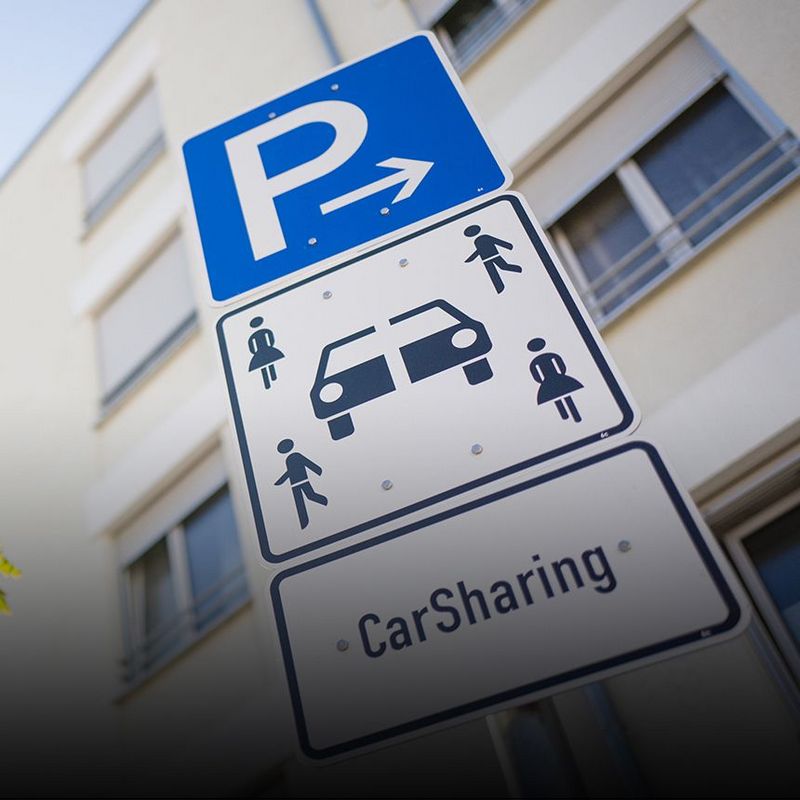31. March 2022
Demand for motorhomes has soared in recent times. And more and more people are toying with the idea of their own mobile home from home. If you want to buy or rent a motorhome, there are a lot of options available to you. And yet, which one will meet your requirements? We present some different types and offer some handy hints on how to choose.
Questions you should always ask before buying:
- How many people do I want to travel with?
- What kind of driving licence do I have?
- What is my budget?
- What follow-up costs should I anticipate (insurance, taxes, maintenance, repair costs, loss of value, fuel consumption, gas consumption)?
Mini-campers: the all-rounder among motorhomes
Mini-campers are based on small panel vans or minibuses and are enjoying growing popularity, especially among young camping novices. Atless than five metres in length, they are completely suitable for everyday use, and the range of clever solutions they offer, such as sleeping, seating and cooking modules, make them ideal for short trips, festivals and summer holidays. Add a tent at the rear or an awning, and you can enjoy significantly more space on the campsite.
Further advantages:
- Lower maintenance costs
- Reasonable fuel consumption
- Lower charges for ferries, tolls and campsites
- Good handling
Campervans: VW buses and the like
These compact and popular campervans offer simple and functional equipment. The best-known representative of this type is the famous VW bus. These come equipped with swivelling front seats, a kitchenette and, in some cases,four sleeping berths (in the pop-up roof and on a converted rear seat). They don’t, however, boast a toilet. Campervan users have to make do with a small chemical toilet instead.
Advantages:
- Compact external dimensions
- Good engine power
- Moderate fuel consumption
- Good handling
- Highly suitable for everyday use
Disadvantage:
- Prices are very high for some models, in some cases more than the cost of a panel van
© Volkswagen AGFrom the traditional 'Bulli' to the new ID.Buzz from Volkswagen - an e-vehicle that can accommodate the whole family.
Box vans: supported by TÜV NORD
At one time, these vans with their steel sheet rear boxes were the sole preserve of intrepid DIY-ers. Nowadays, roughly every second newly registered motorhome is a box van.
What are the distinguishing marks of a box van?
- A transverse bed or, depending on the model, single beds in the rear
- Swivel seats
- A kitchen block with large fridge
- Wet room with shower
- Headroom
Box vans are between 5.40 and 6.40 metres long. Box vans with a short wheelbase are especially manoeuvrable and more suitable for everyday use. They can carry sufficient weight, and since the permissible total weightis up to 3.5 tons, as with mini-campers or campers, even young drivers with a class B driving licence can also drive a box van. If you want to travel in a group of four, you can order a pop-up roof as well. But beware: at least in Germany, converting a box van into a motorhome can invalidate its general operating licence. If you don’t want a nasty surprise at the end of the registration process, you would be best advised to consult a recognised expert, for example from the TÜV, during the conversion phase.
© TÜV NORDIf you want to convert your van into a camper van, you should consult a recognised expert, for example from TÜV NORD.
Alcove motorhomes: The family-friendly classic
They had their heyday in the 1980s and 1990s and were chosen to be the motorhome symbol on all traffic signs. Today, only one in ten new motorhomes is an alcove model: a camper with sleeping berths directly over the cab. In many cases it is families who opt for this spacious classic, which, depending on the model, has space for up to six people and bunk beds in the rear.
Advantages:
- lots of space, very suitable for families
- very good value for money
- large kitchen, spacious bathroom, enough cupboard space
Disadvantages:
- limited suitability for everyday use due to their size. Because of their height, some bridges are too low to allow them through.
- The permissible total weight of 3.5 tons is quickly exceeded in everyday driving. The only way to get around this is to upgrade your driving licence to class C1.
Semi-integrated motorhome: perfect for couples
With the semi-integrated motorhome, the cab of the base vehicle is preserved, and the accommodation structure is added on almost seamlessly at the rear.The length usually varies between six and 7.5 metres. While short vehicles are manoeuvrable, longer ones require increased awareness in road traffic – especially if a bike trailer is attached at the rear.
The price is highly dependent on the base vehicle, the manufacturer and the equipment. The large target group primarily includes couples. A lifting bed, which is raised and lowered above the seating area, can be employed to accommodate more passengers.
Here’s a tip: As a rule, manufacturers try to build their semi-integrated motorhomes in such a way that they stay below the 3.5-ton threshold, including sufficient payload. You should watch out for this before you make your choice!
Fully integrated motorhome: The elite class with panoramic views
In a fully integrated motorhome, the base vehicle is completely integrated into the accommodation structure – meaning that it is no longer recognisable as a separate structure. The tell-tale signs are the large windscreens and the lack of doors in the cab. Due to the upscale equipment, the large amount of space and the high-quality workmanship, this is referred to as the “elite class”. This is also reflected in the price, which is higher than that for most other types of motorhome.
In general, fully integrated motorhomes exceed the 3.5-ton limit, which brings with it some disadvantages:
- Restrictions in road traffic due to overtaking bans
- Speed limits
- Higher tolls
- In most cases, a C1 class driving licenceis required.
© iStockFully integrated motorhomes are also referred to as the "royal class"; here, travellers want for nothing.
1. First of all, try out camping in a motorhome
If you have never taken to the road in a motorhome, you should rent one at least for a few days before buying. Then you will know whether this way of travelling appeals to you and whether the type of motorhome you’ve hired is the right one. Rental vehicles are available from dealers and private individuals on various online platforms – and come with free tips from camping experts!
2. Do your homework
Once you have opted for a specific motorhome type, you should allow yourself enough time to try out some different models. Camping fairs can be really helpful here, as can the personal accounts and test reports that feature in the specialist press.
3. Used does not always mean better value
The range of used motorhomes has increased significantly in recent years. Unfortunately, they now command prices ranging from the stratospheric to the simply absurd. So, you should carefully consider whether it makes sense to go for a well-maintained used vehicle ahead of a new one with state-of-the-art engine technology.






